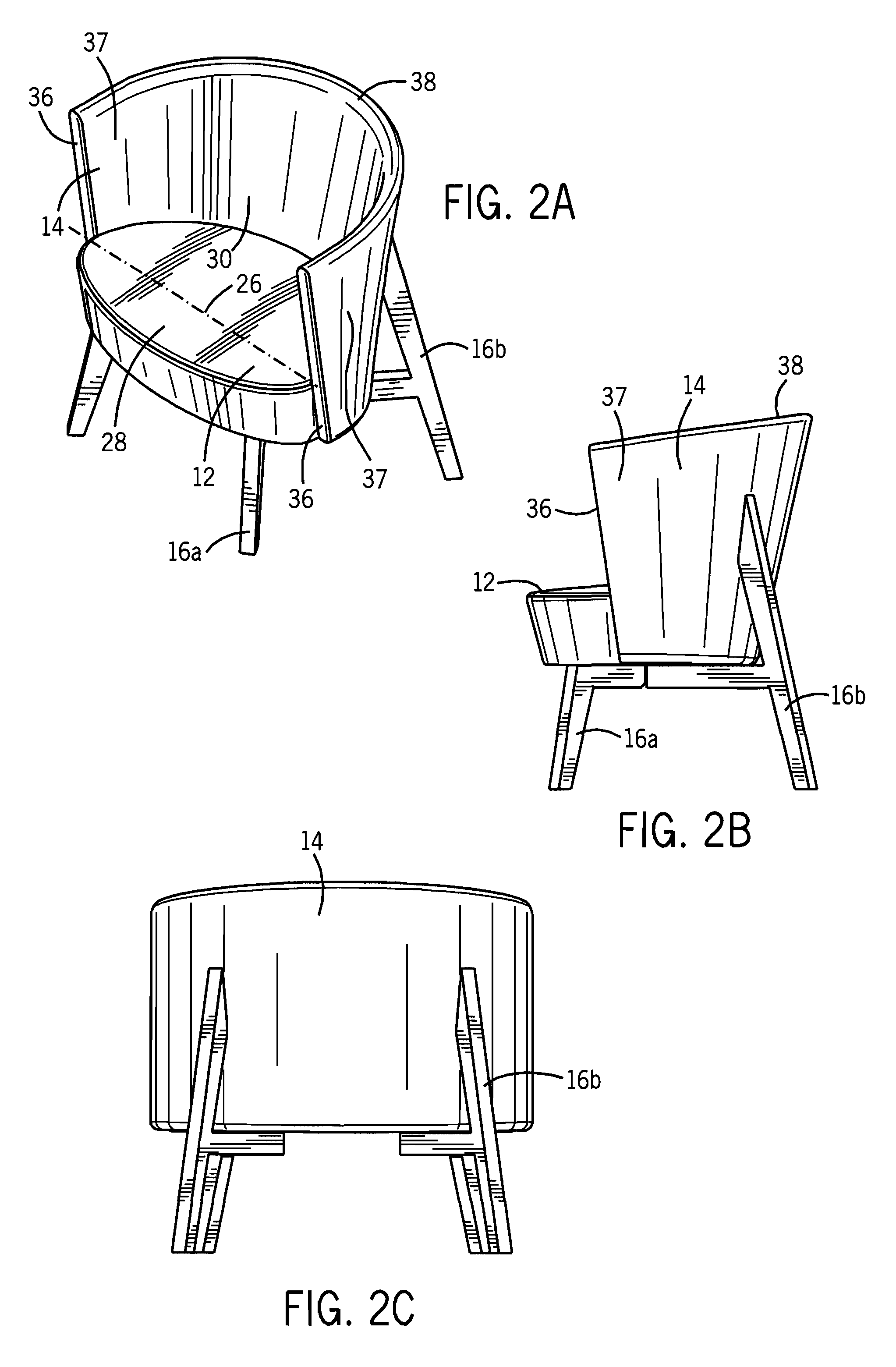Bariatric seating furniture
- Summary
- Abstract
- Description
- Claims
- Application Information
AI Technical Summary
Benefits of technology
Problems solved by technology
Method used
Image
Examples
first embodiment
[0027]Referring first to FIGS. 1A-1D, there shown is the seating furniture 10 constructed in accordance with the present disclosure. In the embodiment shown in FIGS. 1A-1D, the seating furniture has the form of a chair designed to support a single occupant. The seating furniture 10 generally includes a seat portion 12, a back portion 14 and four legs 16. The legs 16 include a pair of front legs 16A and a pair of rear legs 16B that are designed to support the seat portion 12 above a generally horizontal support surface, such as the floor.
[0028]Referring to FIG. 1D, the seat portion 12 includes a top support surface 18 that is generally defined by an outer perimeter 20. In accordance with the present disclosure, the outer perimeter 20 includes a front perimeter edge 22 and a rear perimeter edge 24. In the embodiment illustrated, both the front perimeter edge 22 and the rear perimeter edge 24 have the general shape of a semi-ellipse. In the embodiment illustrated, the front perimeter e...
embodiment 70
[0046]Referring now to FIG. 9, there shown is a multi-seat embodiment 70 of the seating furniture. In the multi-seat embodiment, three separate seating areas 72A, 72B and 72C are supported by a single pair of front legs 16A and rear legs 16B. Each of the seating areas 72A-72C includes a seat portion 12 and a back portion 14. The seat portion 12 and back portion 14 are constructed similar to the seat portion 12 and back portion 14 shown in the embodiment of FIGS. 4A-4D.
[0047]Referring now to FIG. 10, there shown is yet another alternate embodiment of the seating furniture 10. In the embodiment shown in FIG. 10, the seating furniture 10 includes a pair of seating elements 74A and 74B along with a table surface 76. Each of these seating elements 74A, 74B includes a seat portion 12 and a back portion 14 constructed in accordance with the embodiment shown in FIGS. 1A-1D. The seating furniture of FIG. 10 includes a pair of front legs 16A and rear legs 16B that are also each connected in a...
PUM
 Login to View More
Login to View More Abstract
Description
Claims
Application Information
 Login to View More
Login to View More - R&D
- Intellectual Property
- Life Sciences
- Materials
- Tech Scout
- Unparalleled Data Quality
- Higher Quality Content
- 60% Fewer Hallucinations
Browse by: Latest US Patents, China's latest patents, Technical Efficacy Thesaurus, Application Domain, Technology Topic, Popular Technical Reports.
© 2025 PatSnap. All rights reserved.Legal|Privacy policy|Modern Slavery Act Transparency Statement|Sitemap|About US| Contact US: help@patsnap.com



